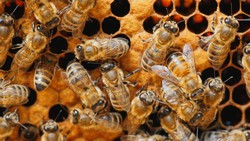The evolution of insect societies
The theory of kin selection offers the best current explanation for the emergence of cooperation seen among social insects. Yet, the theory still does not explain how, in the absence of a manager, tasks are assigned in cooperative societies. The EU-funded SODOLS (Sociality and division of labour: Microbial, behavioural and epigenetic interactions) project team explored the idea that the gut microbial community affects, and is affected by, insect sociality and behavioural division of labour. Researchers tested the new theories using the highly social honeybee (Apis mellifera) and the dinosaur ant (Dinoponera quadriceps) that has simpler societies. Honeybee workers of the same age performing different tasks showed significantly different abundances of some core gut bacterial community taxa. Workers performing mainly nursing tasks within the hive showed a higher abundance of bacterial taxa associated with carbohydrate processing and health than workers performing foraging outside the hive. In dinosaur ants, abundance of gut bacterial taxa also differed depending on task performed. The researchers also assessed the relationship between environmental landscape and gut microbial community. Using community amplicon sequencing, the team assessed changes in the microbial community of bees exposed to both different environmental landscapes, and field realistic stressors under controlled laboratory conditions. Results illustrated the complexity of the relationships between the host, gut bacteria and both the environmental landscape and local environment. Researchers concluded that the work individual bees do, and therefore their local environmental, influences the abundance of some bacterial taxa. Dinosaur ant workers, belonging to simpler societies also exhibited differences in gut microbial community depending on behavioural task performed. The study highlighted the possibility of a feedback loop, where environmental exposure, mediated by behaviour, influences gut bacteria abundance, and these differentially represented bacteria may in turn play a role in the maintenance of effective division of labour. SODOLS work provides insights into factors potentially contributing to the evolutionary origins and maintenance of sociality and division of labour in insects. In addition, the work sheds light on what might be affecting bee health, an important issue for agricultural pollination.







